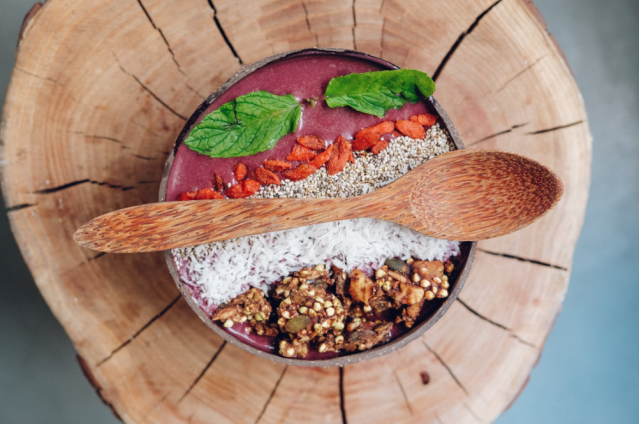Editor’s note: Any medical advice presented here is expressly the views of the writer and Red Tricycle cannot verify any claims made. Please consult with your healthcare provider about what works best for you.
Ah, hormones. Most of us remember from 7th-grade biology that hormones have something to do with the reproductive system. And some of us may have more in-depth knowledge about how hormones impact monthly cycles and fertility. But did you know that hormones, especially progesterone, can impact skin, hair, mood, sleep quality, sex drive, weight, and general wellness?
If you have been measuring your progesterone and don’t consistently get a positive test throughout the implantation window, you may have low progesterone. Other signs of low progesterone include brown spotting before your period and irregular cycles, headaches, mood changes, breast tenderness, and more. For many women with low progesterone, PMS, and PCOS, seed cycling can help balance hormone levels and can also potentially reduce symptoms. Seed cycling is a natural and healthy way to help balance hormones, using…you guessed it: seeds!
What is Seed Cycling?
Seed cycling involves rotating certain types of seeds throughout your menstrual cycle, in order to promote a hormone balance. In a typical menstrual cycle, estrogen levels rise during the first half of the cycle (the follicular phase) and progesterone levels rise during the second half of the cycle (the luteal phase). When these key hormones are imbalanced, it can lead to menstrual irregularities, including breast tenderness, painful periods, acne, and PCOS symptoms.
How Does Seed Cycling Work?
Seed cycling involves tracking your menstrual cycle and eating specific seeds during different days of the cycle, to help ensure optimal levels of estrogen and progesterone when these hormones are present during the cycle.
During the follicular phase, estrogen is the star. For days 1-14 of your cycle (for those new to cycle days, day one is the first day you have your period), eat 1-2 tablespoons each of fresh ground flax and raw pumpkin seeds per day. These seeds naturally support estrogen production (by containing lignans and zinc), but can also help in clearing excess estrogen, also known as estrogen dominance.
In the luteal phase, progesterone takes over at center stage. After ovulation or on day 15 of the cycle, switch from flax seeds and pumpkin seeds to 1-2 tablespoons each of raw sunflower and sesame seeds per day. Sesame seeds (high in zinc) and sunflower seeds (high in vitamin E) help with progesterone production during the luteal phase.
Continue eating sunflower and sesame seeds daily through day 28 of your cycle. You then switch back to flax and pumpkin seeds once you start your period again.
Best Ways to Consume Seeds
Seed cycling works best when the seeds are raw and freshly ground, as grinding the seeds increases the surface area for absorption. There are many options for ways to consume seeds, including:
- Making fresh seed butter (to enjoy with fruit or toast)
- Making a raw seed-based granola
- Sprinkling seeds on a salad
- Blending seeds into smoothies
- Mixing seeds into salad dressing
- Adding seeds to chia pudding, oatmeal, or yogurt parfaits
I have had low progesterone throughout adulthood, which caused infertility challenges and continued to make for unpleasant periods, headaches, and low energy each cycle. I started seed cycling as a natural way to help her body naturally balance hormone levels. I’m a huge fan of seed cycling. After starting it, I have noticed fewer headaches, shorter and lighter periods, longer luteal phases, and overall increased mood and energy level.
It can take about three months for you to see the benefits of seed cycling. We recommend keeping a journal to keep track of your symptoms through the cycle so you can look back to see impacts over time. As always, if you have any concerns, it is best to consult your doctor. Happy cycling!











